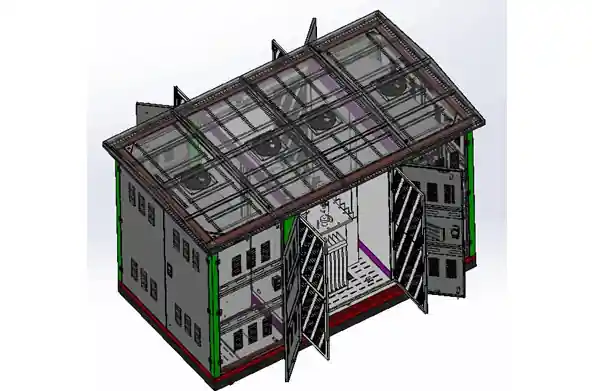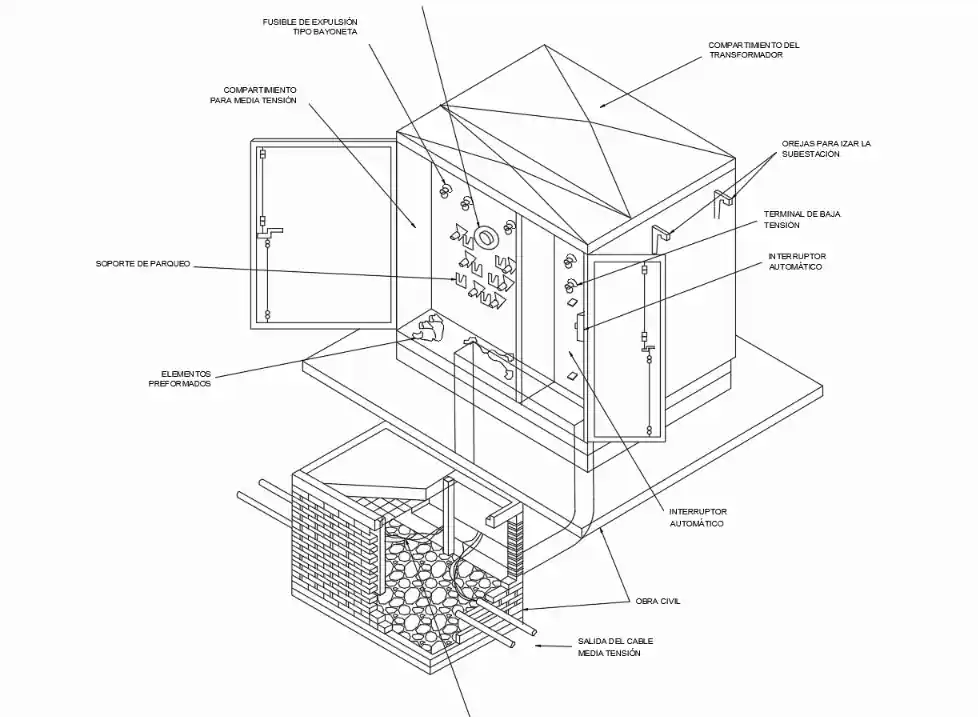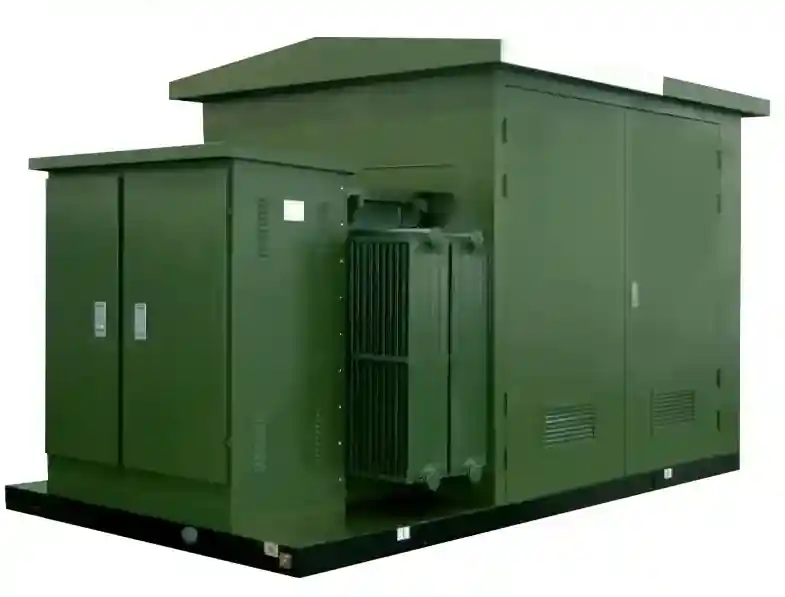
Core Concept: What is a Compact Substation?
A compact substation integrates a medium-voltage switchgear, transformer, and low-voltage switchgear into a single enclosed unit. Its primary function is to step down medium voltage (typically 11kV, 22kV, or 33kV) to a usable low voltage (usually 400V) for end-users.
Compact substations are factory-assembled, tested, and ready for fast deployment, making them ideal for urban, industrial, and renewable energy environments.
According to Wikipedia, these substations are essential for areas where space, safety, and aesthetics are critical.
Typical Ratings of Compact Substations
| Parameter | Typical Range |
|---|---|
| Rated Voltage (HV side) | 3.3kV, 6.6kV, 11kV, 22kV, 33kV |
| Rated Voltage (LV side) | 400V, 690V |
| Rated Power | 100kVA to 3150kVA |
| Frequency | 50Hz / 60Hz |
| Short-Circuit Withstand Current | Up to 31.5kA (HV side) |
| Protection Class | IP23 to IP54 |
| Cooling Method | ONAN (Oil Natural Air Natural) for transformers |

Application Fields
- Urban Residential Developments: Distributing low-voltage power to apartments and commercial complexes.
- Industrial Parks: Feeding heavy machinery, HVAC systems, and production lines.
- Renewable Energy Plants: Used in wind farms and solar parks to connect power generation to distribution networks.
- Data Centers: Providing secure and uninterrupted medium-to-low voltage transformation.
- Transportation Systems: Railway substations and airport facilities.
A report by IEEE Spectrum emphasizes the growing demand for compact substations in distributed generation and urban energy grids.
Market Trends and Technological Developments
- Modularization: Manufacturers like ABB, Siemens, and Schneider Electric now offer highly modular designs for faster customization.
- Eco-Friendly Materials: Adoption of biodegradable transformer oils and recyclable enclosure materials.
- Smart Monitoring: Integration of SCADA systems and IoT sensors for real-time performance tracking.
- Higher IP Ratings: Enhanced dust and water protection for outdoor or harsh environment installations.
Technical Parameters Explained
Rated Power: Refers to the maximum continuous load the substation can handle without overheating. Common units range from 100kVA for small systems up to 3150kVA for large industrial or utility-scale installations.
Rated Voltage: Determines the input (medium voltage) and output (low voltage) levels. Correct voltage matching is critical to system stability.
Short-Circuit Withstand Current: Indicates the ability to survive sudden high-current faults without catastrophic failure.

Differences from Traditional Substations
| Aspect | Traditional Substation | Compact Substation |
| Installation Time | Several months | Few weeks |
| Space Requirement | High | Minimal |
| Cost | Higher initial cost | Lower total cost for mid-scale needs |
| Customization | High | Modular options available |
| Mobility | Difficult | Relatively easy |
Compact substations bridge the gap between flexibility and performance, especially where space is limited or fast deployment is required.
Buying Tips and Selection Guidelines
- Define Load Requirements: Carefully estimate current and future load profiles.
- Consider Environmental Conditions: Choose appropriate IP ratings for outdoor, coastal, or industrial settings.
- Evaluate Transformer Type: Oil-immersed versus dry-type depending on fire risk and maintenance capabilities.
- Plan for Expansion: Select units with room for load growth or parallel operations.
- Check Certifications: Look for IEC 62271-202, IEEE C37.20.2, or equivalent standards compliance.
Consulting experienced manufacturers or EPC firms ensures optimal solutions tailored to project-specific requirements.
Frequently Asked Questions (FAQ)
A1: A kiosk substation typically refers to a compact substation with a specific enclosure design, often smaller and designed for urban networks. Functionally, both are similar but differ in structure and size.
A2: Yes. They are ideal for solar farms, wind parks, and microgrids due to their modularity, rapid deployment, and compatibility with decentralized energy sources.
A3: With proper maintenance, a compact substation can operate reliably for 25–40 years, depending on environmental conditions and load factors.
In summary, compact substations are crucial for delivering reliable, efficient, and flexible electrical distribution. Understanding their ratings ensures optimal design and implementation across a broad spectrum of modern infrastructure projects.


